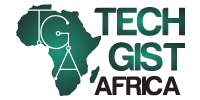Health organizations need information on where beneficiaries live to effectively plan public health campaigns or respond to a disease outbreak. Facebook has launched three maps to provide non-profit organizations and public health workers with information. The maps are: population density maps with demographic estimates, movement maps, and network coverage to know where people live.
The maps provide insight into the population of people living within that demography. It aggregates information from several Facebook users whose location is enabled on their mobile phones. It then uses machine vision, Artificial Intelligence, image algorithms, and real-time snapshots into mobility patterns which can be utilized by partner organizations.
See also: Facebook’s NG_Hub celebrates First Anniversary
Organizations can combine the data with information on specific disease types to predict the next outbreak of diseases like malaria. Diseases are more likely to spread faster in highly populated environments. With the information from the maps, non-profit organizations can predict and monitor the spread of diseases and infections.
Facebook and Columbia University used satellite imagery and census data to build the maps. Facebook has partnered with Direct Relief, Harvard School of Public Health, University of Washington, International Medical Corps, London School of Hygiene & Tropical Medicine, Malaria Atlas Project, the World Bank, World Economic Forum, UNICEF, International Medical Corps, etc. These health organizations are using the info from the maps to reach and better serve affected communities.
More on TechGist Africa:
- Google’s Users to pay for Ad Blocker Feature on Chrome
- Airtel Africa Confirms Listing on the London Stock Exchange
- Nigerian Students Among Top winners of Huawei ICT Competition
- Startup Spotlight: Twiga Foods – Transforming the Supply Chain of Fresh Produce
- Kenya’s First Electric Car ‘Nopia Ride’ Ready for Takeoff















Comments 3